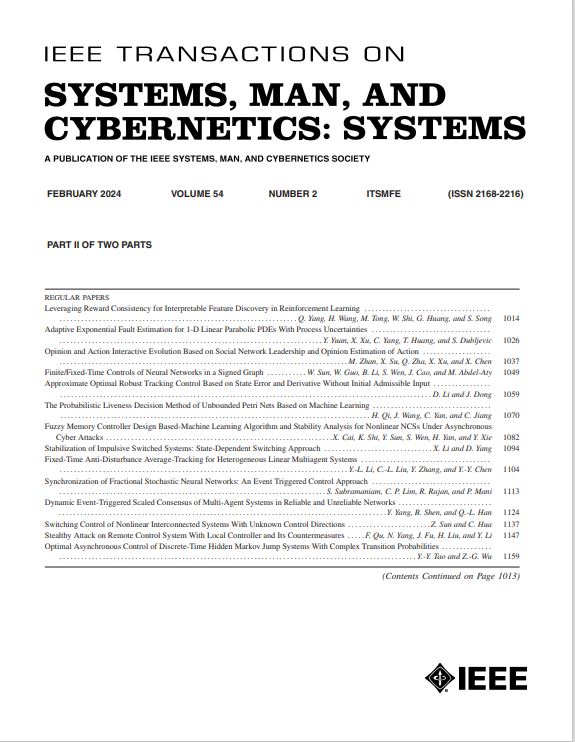Neural Network-Based Indirect Adaptive Force Control of a Two-Fingered Hand Exoskeleton Toward Robust Grasping Assistance
IF 8.6
1区 计算机科学
Q1 AUTOMATION & CONTROL SYSTEMS
IEEE Transactions on Systems Man Cybernetics-Systems
Pub Date : 2025-03-03
DOI:10.1109/TSMC.2025.3541994
引用次数: 0
Abstract
Grasping task is one of the crucial objectives in activities of daily living. However, elderly human subjects are facing significant challenges when attempting to perform grasping task. In this regard, a hand exoskeleton with a proper force control strategy is necessary to improve the performance of assistive technology. In this article, a lightweight, size-adjustable, underactuated, and force-controllable two-fingered exoskeleton prototype is developed for grasping assistance. A novel radial basis function network-based indirect adaptive force controller for robust grasping assistance is proposed along with the prototype design. We have conducted real-time grasping experiments on six elderly human subjects to verify the feasibility of the developed exoskeleton with a novel grasping force control strategy. Furthermore, we have performed force trajectory tracking experiment to validate the efficacy of the proposed force control scheme. Moreover, the robustness of the proposed grasping force control strategy has been validated through a disturbance rejection experiment. Extensive simulation and experimental studies with the developed kinematic model and feasibility tests involving elderly human subjects show that the newly developed hand exoskeleton with the proposed robust intelligent control strategy is efficient for object-grasping tasks aimed at the assistance of elderly human subjects.求助全文
约1分钟内获得全文
求助全文
来源期刊

IEEE Transactions on Systems Man Cybernetics-Systems
AUTOMATION & CONTROL SYSTEMS-COMPUTER SCIENCE, CYBERNETICS
CiteScore
18.50
自引率
11.50%
发文量
812
审稿时长
6 months
期刊介绍:
The IEEE Transactions on Systems, Man, and Cybernetics: Systems encompasses the fields of systems engineering, covering issue formulation, analysis, and modeling throughout the systems engineering lifecycle phases. It addresses decision-making, issue interpretation, systems management, processes, and various methods such as optimization, modeling, and simulation in the development and deployment of large systems.
 求助内容:
求助内容: 应助结果提醒方式:
应助结果提醒方式:


